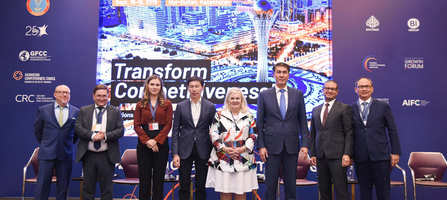
News
Not a tribute to fashion, but a real tool
18 October 2021


Kazpravda newspaper
sources
– In his Address to the people of Kazakhstan on 1 September 2020, the President noted the need to switch to the format of concise national projects that are understandable to all citizens. As a goal-setting initiative, it is necessary to determine the primacy of the result over the process, - says Yermek Toktarov, Leading Researcher at the Department of Socio-Political Studies of the Kazakhstan Institute for Strategic Studies (KISS) under the President of the Republic of Kazakhstan.
According to him, the transition from the format of state programs to national projects means a change in the approach to solving pressing issues. Previously, government agencies focused on long-term interventions. And often state programs contained administrative measures, which are already part of the functional duties of state bodies. In addition, the state programs were cyclical in nature, that is, they were renewed after deadlines.
The fundamental difference between national projects is that they are initially short-term and one-time interventions. They cannot be extended or renewed without result evalution.
All 10 national projects are aimed at obtaining public benefits that concern every citizen: education, health, ecology, public services, security, quality of life and much more. National projects are a direct state response to the current systemic demands from society.
With the adoption of national projects, the transition of the state planning system to project based planning was indicated. And to implement this transition, the National Project Office and the Digital Office were created.
“The Institute of National Projects has a number of positive aspects,” says Kuanysh Zhaikov, partner at the Research and Consulting Center (CRC).
This time the state comes out with consistent positions, according to mr. Zhaikov. A little earlier, the state planning system was always changing due to constant publication of unrelated documents. In addition, they pursued goals that were not fully understood by an ordinary citizen. Now, the Agency for Strategic Planning has initiated 10 national priority projects to be accomplished by 2025, that the President signed with a Decree on 26th of January. We are not talking about abstract goals, but about topics that are quite understandable to citizens - healthcare, education, security, a strong economy, and territorial development.
Thus, a signal was sent to the state apparatus - unnecessary discussions are stopped, it is necessary to focus on this and not go beyond the 10 priorities.
– Now 10 national projects have been approved for the implementation of 10 priorities. State policy is becoming more predictable and understandable, most importantly, human-centered,” says Kuanysh Zhaikov. - Previously, there were state programs. These are massive documents that quickly turned into a bureaucratic tool - a collection of statistical data of little use, a tribute to international trends, unrelated decisions, framed in the form of well-wishes. Each paragraph could be reduced to a few words without losing the meaning.
The state apparatus has always understood that the real policy lies not in the programs themselves, but in the action plans for them, as the expert notes. It specifies specific actions, responsible entities, deadlines and, most importantly, budgets. Often, action plans had little connection with the state program itself. But if the latter was widely publicized, then the plan was developed in the silence of ministerial offices. Now, in fact, we immediately have action plans. The analytical part has not gone away - there are entire institutions under ministries and agencies that have been doing this work for years. Now citizens can immediately see point by point what exactly will be done by the state by 2025.
“Most people will accept national projects well because of their simplicity,” says Kuanysh Zhaikov. - This means - there will be more questions to state bodies, which means - better performance. Previously, when asked “who read the state program,” only 2-3 raised hands could be seen among state oficials, even less among ordinary people.
Before, each state program had its own deadlines, several were discussed at the same time, according to the expert. On the one hand, this made it possible to discuss them more in-depth. But, on the other hand, the overall picture of state planning was lost. What was previously accepted was slightly forgotten. The most critical is that budgetary restrictions were not taken into account, “first come, first serverd” principle was in effect.
Now the Government has supported the idea of the Agency for Strategic Planning and held several brainstorming rounds of all national projects simultaneously. Comparing some individual business projects with the need to build schools, hospitals and roads was made possible. Or matters concerning national economy – an agro-industrial complex could be discussed along with manufacturing industry, trade, or transport.
This approach allows building a more comprehensive picture of what the country really needs and what can be temporarily abandoned. But there is still a macroeconomic part - how much taxes can be collected, how much money can be taken from the National Fund to finance projects.
All in all, more balanced documents began to emerge. Large budgets are allocated for palpable results - access to drinking water, sewage treatment, house heating matters, roads, schools and hospitals. The social bloc has benefited the most from this format, although it has traditionally been inferior to the economic bloc in terms of readiness to implementation.
- The situation has become much better, everything is clear and understandable. Before, you just could not find a list of all government programs on one page on the Internet. And now we have national projects, accessible and structured. This will benefit citizens and the state apparatus.
“The adoption of national projects is the result of a great amount of work to modernize the system of state planning and management, which was launched in accordance with last year’s Address of the Head of State Kassym-Jomart Tokayev,” says Arman Toktushakov, an expert at the Institute of World Economy and Politics (IMEP) of the Nursultan Nazarbayev Foundation. – National projects have become a new key element of state planning.
The priority of national projects is to improve the quality of life and welfare of the population, increase the competitiveness of the economy, according to the expert. For example, people’s satisfaction with the quality of medical services should increase to 80%. The implementation of the national project in the field of education involves the construction of thousands of schools by 2025.
Each national project has a fundamental basis. Firstly, it is the Kazakhstan-2050 Strategy, a key document defining a long-term vision. Secondly, it is an updated State Planning System. Thirdly, it is five-year planning system, which included the adoption of the National Priorities and the National Development Plan 2025.
During the development, tasks and performance indicators from the election platform of the Nur Otan party were integrated into all national projects. Accordingly, the party, as the driving political force of the country, will control the Government in terms of fulfilling its obligations.
By accepting national projects, the government assumes public responsibility. This is the most important milestone for the current stage of public administration development in Kazakhstan.
National projects, on one hand, allow the Government to clearly understand the list of tasks it should complete and the deadlines for their implementation, and on the other hand, allows civil society to assess the quality of work of central and local government bodies.
The Agency for Strategic Planning and Reforms of the Republic of Kazakhstan carried out a lot of methodological work, which resulted in the adoption of concise, uniform national projects with clear performance indicators working to achieve common medium- and long-term goals. If international experience in this matter is concerned, then, first of all, we should refer to Russia, with its 12 national projects being implemented right now. They, like those in Kazakhstan, provide for economic growth, improving the quality of human capital and creating a comfortable environment for life. Similar national projects are also being implemented in the UK and Japan, addressing issues in the field of housing, quality education and healthcare.
It should be noted that ministries will be responsible for the successful implementation of our national projects. For example, the Ministry of National Economy will be responsible for sustainable economic growth, development of entrepreneurship and regions. Interaction methods between local and central authorities are planned. So are the plans for the development of the regions, which are carried out by akimats, they will be adjusted in accordance with the goals and objectives of national projects.
all publications











